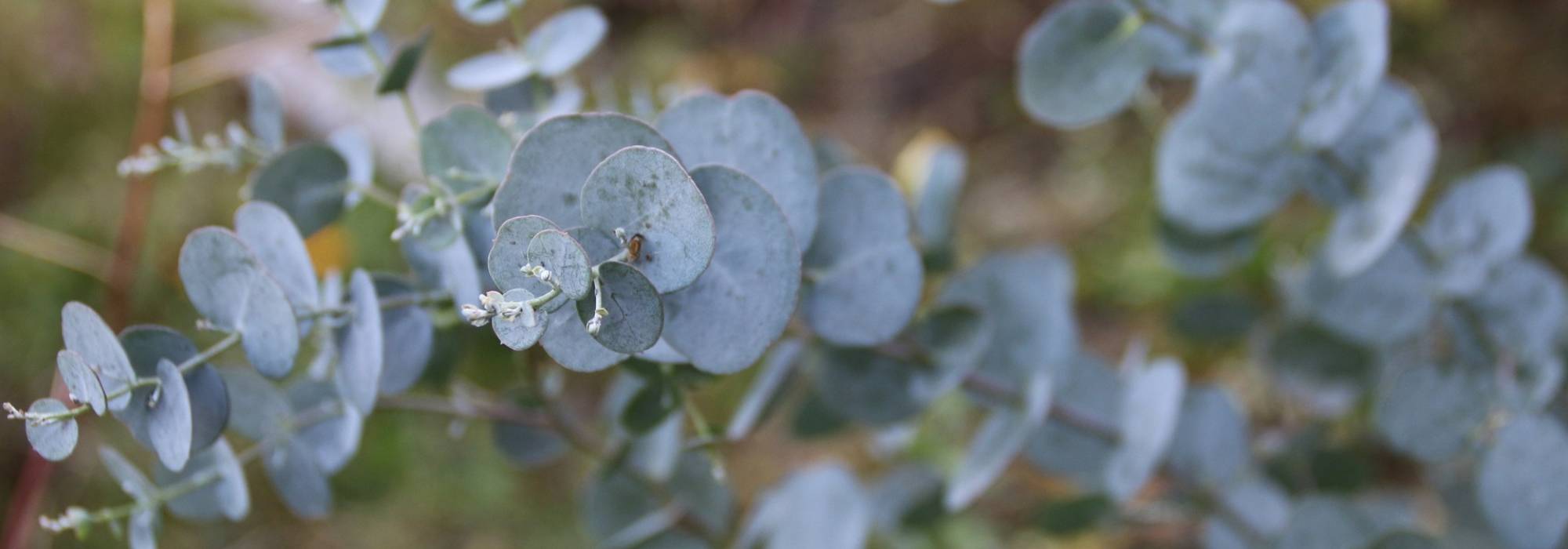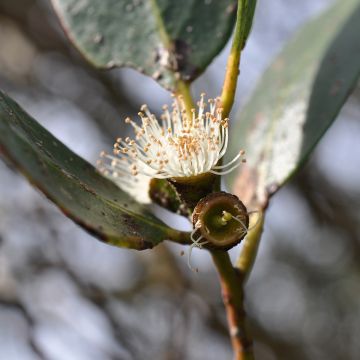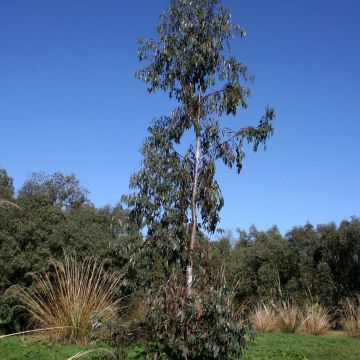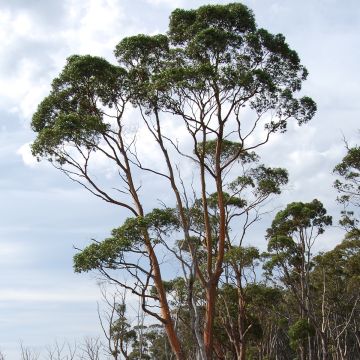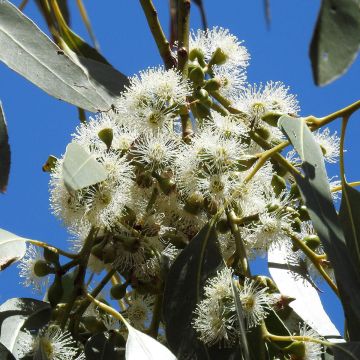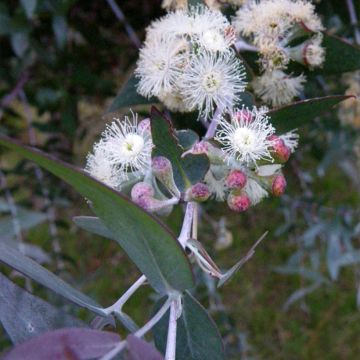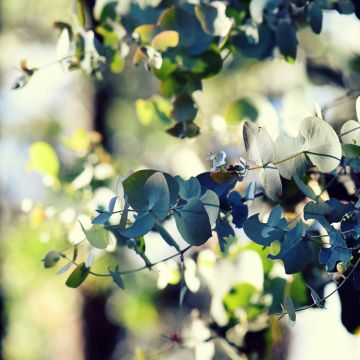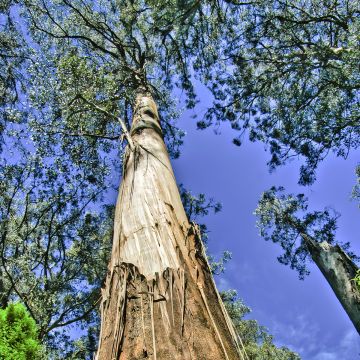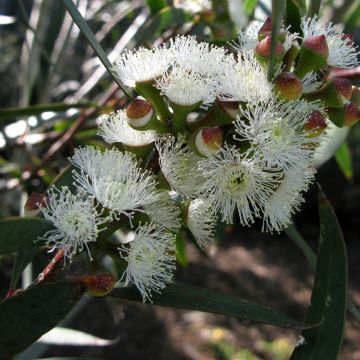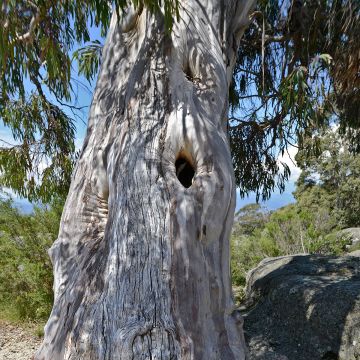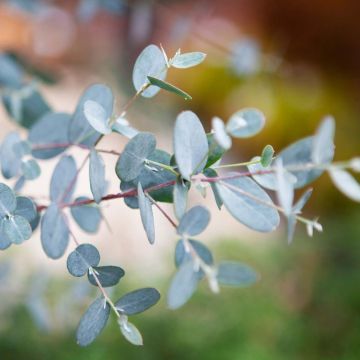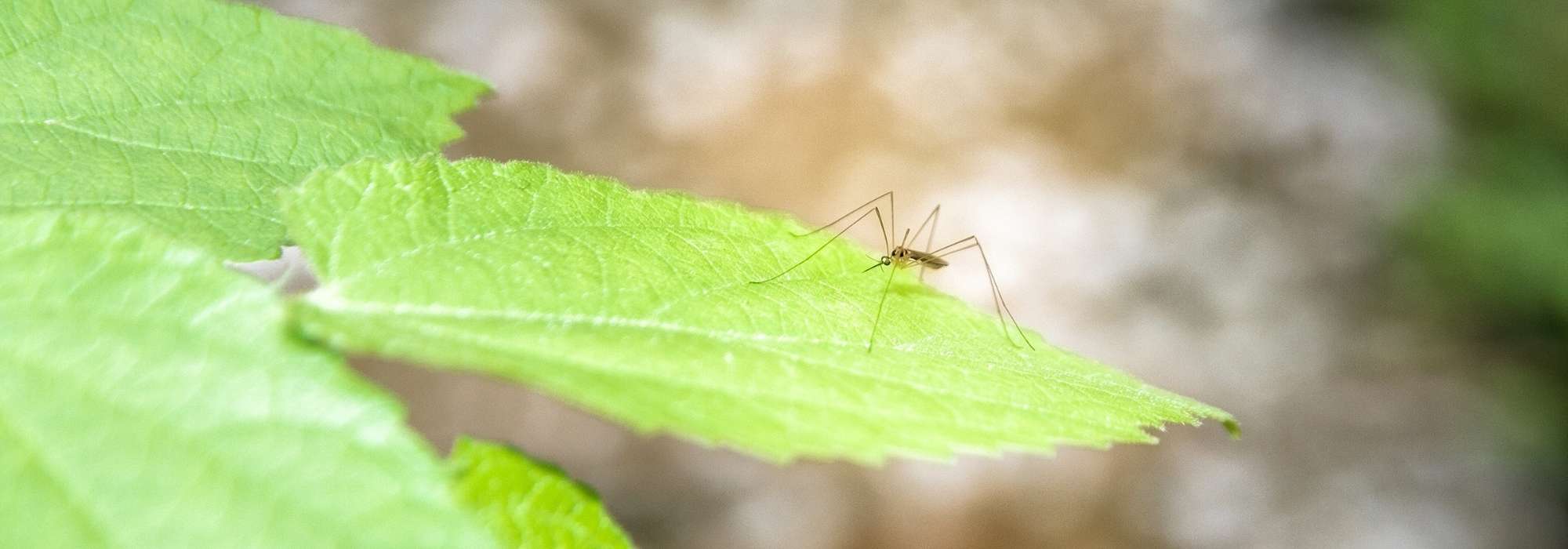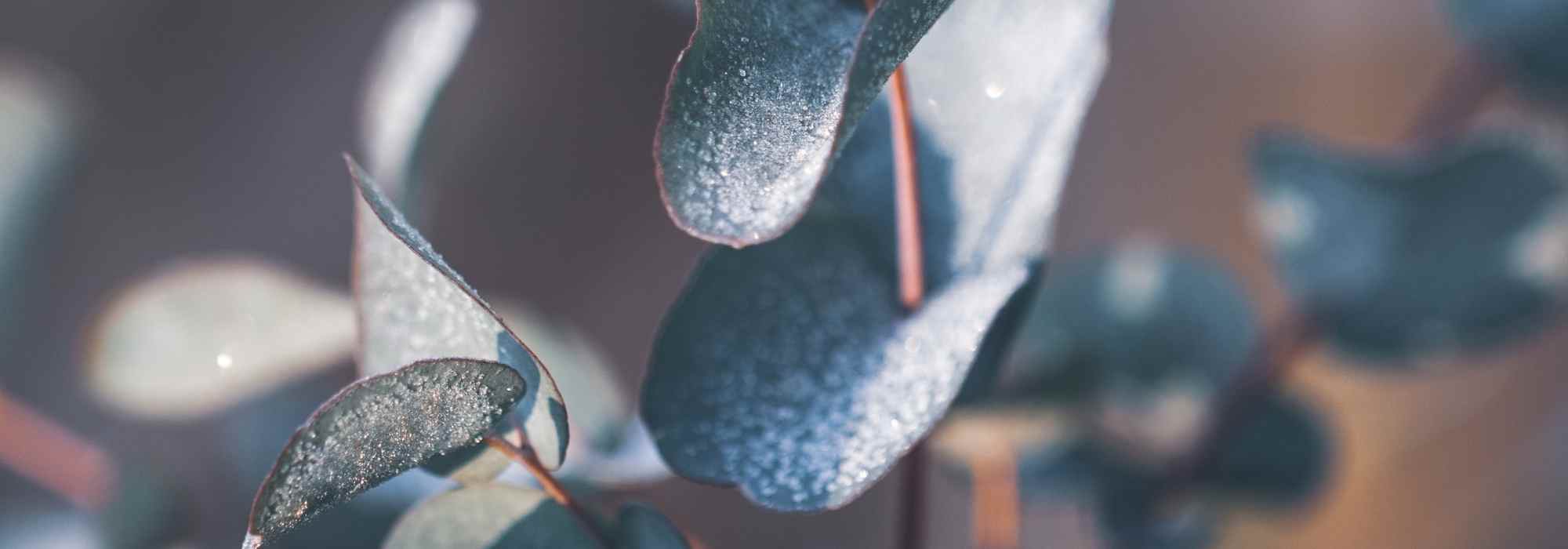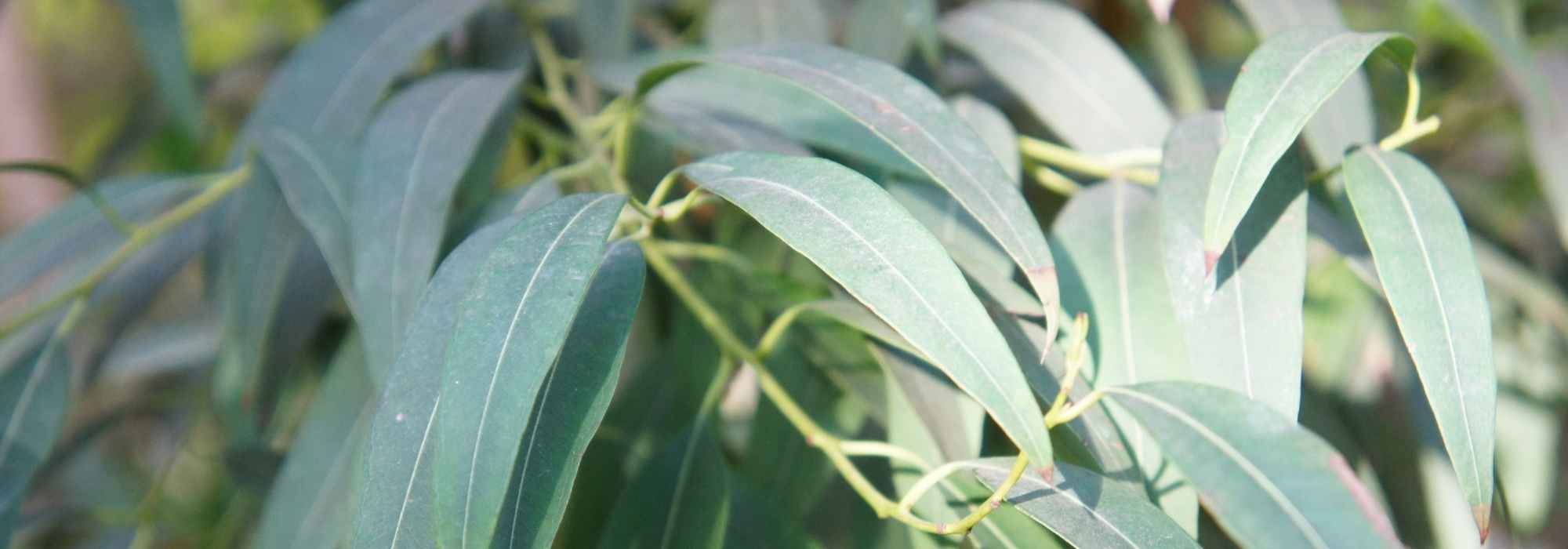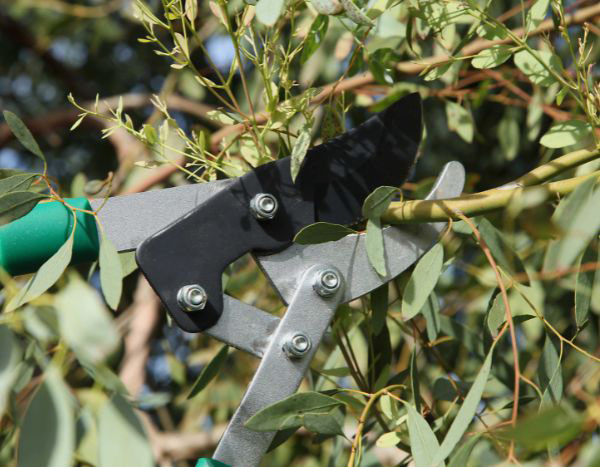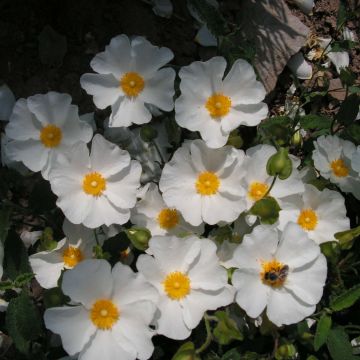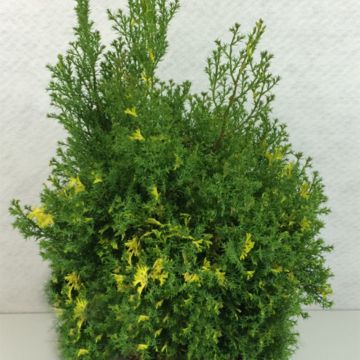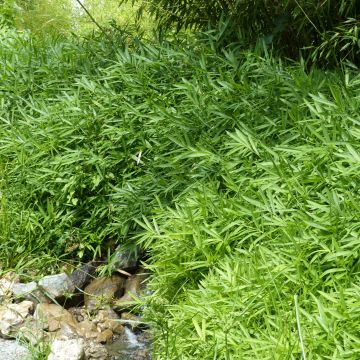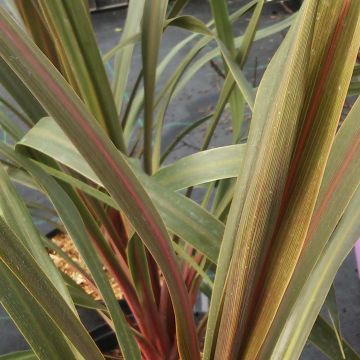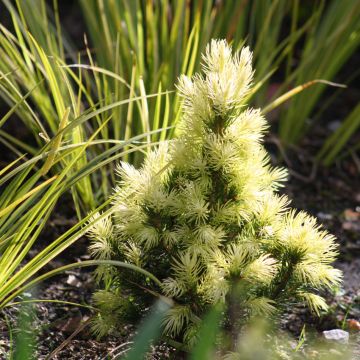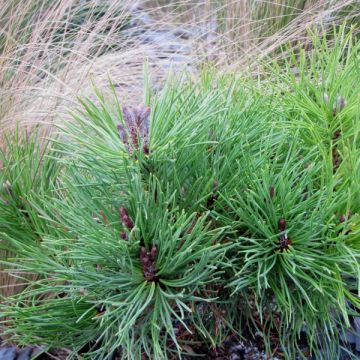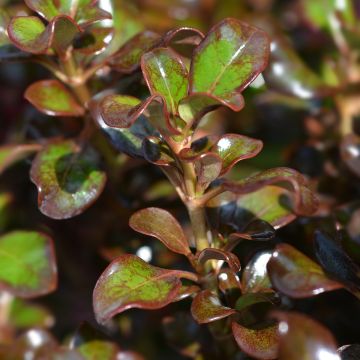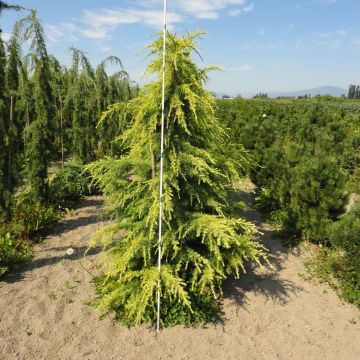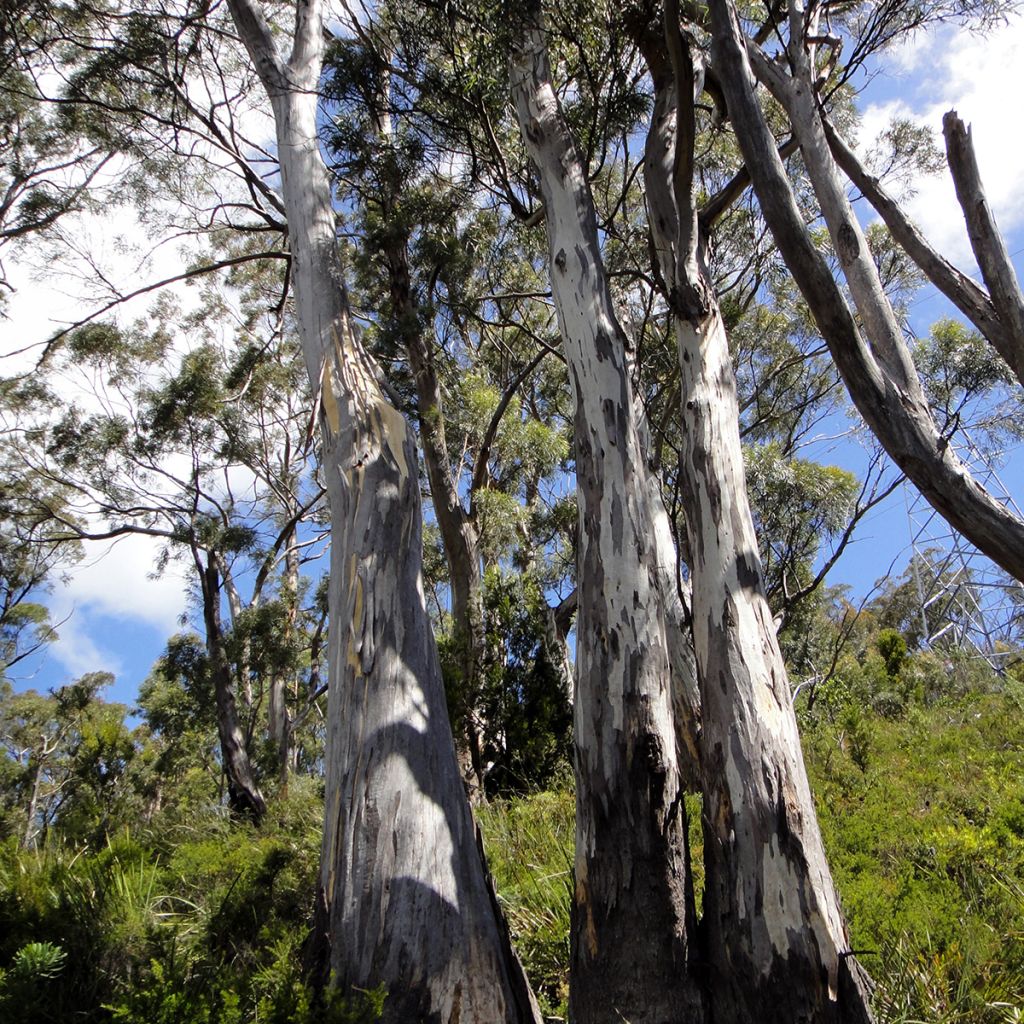

Eucalyptus pulchella
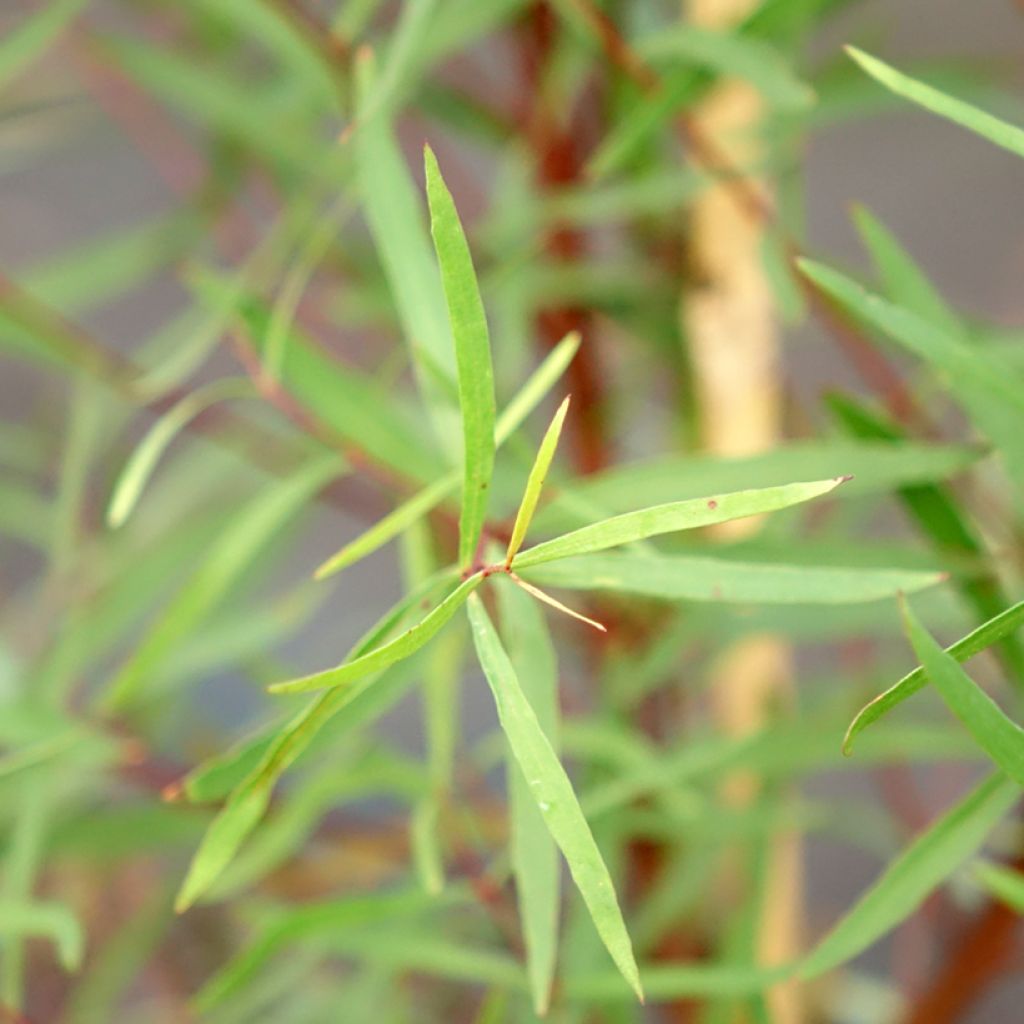

Eucalyptus pulchella
Eucalyptus pulchella
Eucalyptus pulchella
White Peppermint, Silver-leaved Mountain Gum
Delivered in June 2025. A very beautiful eucalyptus that also grows quickly.
Brigitte, 10/07/2025
Special offer!
Receive a €20 voucher for any order over €90 (excluding delivery costs, credit notes, and plastic-free options)!
1- Add your favorite plants to your cart.
2- Once you have reached €90, confirm your order (you can even choose the delivery date!).
3- As soon as your order is shipped, you will receive an email containing your voucher code, valid for 3 months (90 days).
Your voucher is unique and can only be used once, for any order with a minimum value of €20, excluding delivery costs.
Can be combined with other current offers, non-divisible and non-refundable.
Home or relay delivery (depending on size and destination)
Schedule delivery date,
and select date in basket
This plant carries a 24 months recovery warranty
More information
We guarantee the quality of our plants for a full growing cycle, and will replace at our expense any plant that fails to recover under normal climatic and planting conditions.

Does this plant fit my garden?
Set up your Plantfit profile →
Description
Eucalyptus pulchella is a little-known species, but one that deserves to be known, and decorative in more ways than one. This tree, which can reach a height of about ten metres, has a relatively wide habit, forming very beautiful standalone specimens. Its trunk is dressed in beautiful smooth cream or yellow bark, sometimes also in shades of grey or pink. The excessively thin, linear leaves in a beautiful dark green, are very aromatic when crushed, exhaling a pleasant peppermint fragrance. A delicate white flowering, made up of umbels of flowers reduced to their stamens, adorns this light foliage. Fairly easy to grow in well-drained soil, it requires sunny exposure and winters which are not too cold.
Eucalyptus belongs to the large Myrtaceae family, like the Callistemon (Bottlebrush), the Feijoa or of course the Myrtle. The Eucalyptus genus has more than 800 species, almost all native to Australia, except a few from Southeast Asia. The Eucalyptus pulchella (synonym of E. linearis) is a species native to Tasmania, a large island located south of Australia. Its distribution area spreads throughout the southeast of the island, where it grows at low altitudes in hilly areas, often in very poor soils. The climate there is mild to hot in summer, but cool to cold in winter, and there is no marked dry season.
In these conditions, it forms a small to medium-sized tree, of moderately rapid growth, which can reach 20 m (66 ft) high over time. This species presents the particularity, quite common among Eucalyptus, of developing a lignotuber, an underground formation rich in starch intended to regrow the aerial part in case of destruction (by fire in particular). Numerous buds then develop, forming abundant shoots. This characteristic is very interesting for ornamental use, as it allows rejuvenation of the plant.
Under our climates, its growth will be less, limited to about ten or a dozen metres in height and 7 to 9 m (23 to 30 ft) in spread. It adopts a rather wide and ample habit, with well-staged branching giving it a very harmonious silhouette. This elegant tree has a very decorative bark, smooth when young, it is cream or light yellow, sometimes tending towards grey or pink. As it ages, the base of the trunk up to 1 or 2 m (3 ft or 7 ft) high becomes more fibrous, and of a grey-brown colour, exfoliating in long, thin shreds.
The foliage is another asset of this species: evergreen and elegant, it is ornamental all year round. The juvenile foliage is made up of small, sessile, opposite leaves, measuring only 2.5 to 3 cm (1 to 1.2 in) long by 2 to 4 mm (0.1 to 0.2 in) wide. Lanceolate, practically linear (hence the second species name of Eucalyptus linearis), and green. The adult foliage differs essentially by its larger size and petiolate and alternate leaves, which can reach 12 cm (4.7 in) long by 1 cm (0.4 in) wide. Quite dark green in colour, they fall lightly on either side of the branches. While their aesthetics are already remarkable, they hide a second asset, a very pronounced peppermint fragrance when crushed.
The flowering which appears in Tasmania in February-March and also in November-December is in the form of charming white pompoms. These are in fact round petal-less flowers, composed of a multitude of white stamens. They bloom between the leaves, grouped in umbels of 9 to 20 all along the branches, and very visible in the middle of the fine foliage. They are followed by the formation of green fruits shaped like cones, without real ornamental interest.
This Eucalyptus needs well-drained, neutral to acidic soil, and a sunny exposure to develop well. Once well-rooted, it proves quite resistant to dryness. Warmer coastal climates will also suit it, provided it is planted in well-draining soil, even thin and poor.
Eucalyptus pulchella is a beautiful tree that will find a place in a group or isolated, even in small gardens. It tolerates severe pruning well and its growth is slower than many other species of the genus. It will bring a delicate exotic touch to the garden. Plant Pink Indigotier (Indigofera heterantha), a pretty bush with compound foliage of a beautiful deep green, and summer clusters of purple-pink flowers, at its feet. In a mild climate, Pittosporum tenuifolium Purpureum will allow you to create a sumptuous contrast thanks to its small wavy leaves of a dark purple which will strongly contrast with the light bark of your Eucalyptus.
Eucalyptus pulchella in pictures
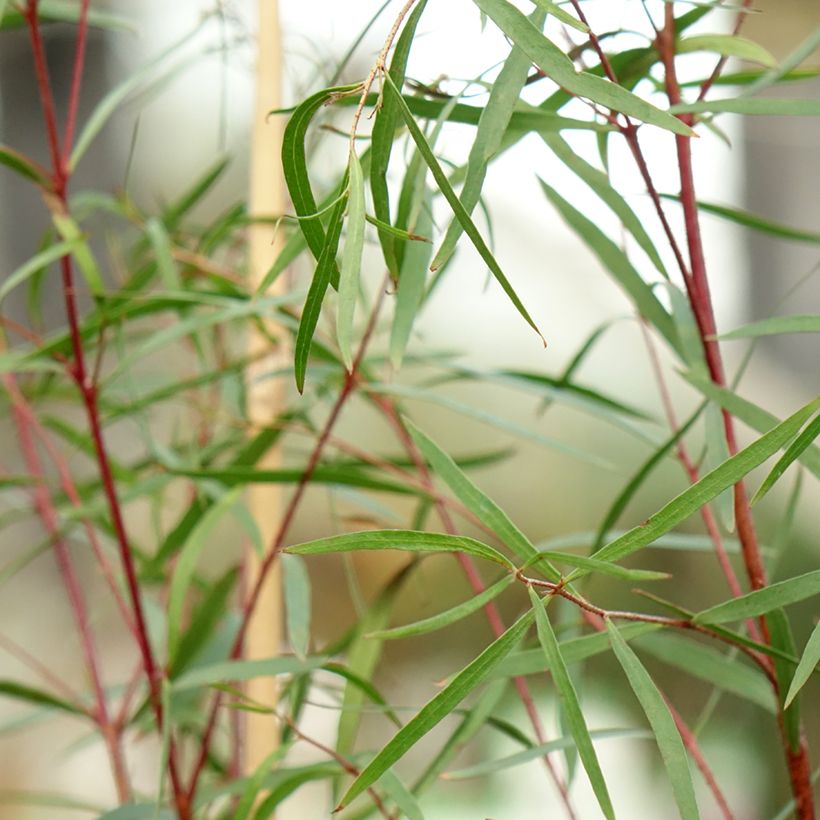

Plant habit
Flowering
Foliage
Botanical data
Eucalyptus
pulchella
Myrtaceae
White Peppermint, Silver-leaved Mountain Gum
Eucalyptus linearis
Australia
Other Eucalyptus
View all →Planting and care
Eucalyptus pulchella is best planted at the beginning of autumn in a mild climate, to benefit from the winter rains, or at the beginning of spring in cooler regions, after the last frosts. Choose a sunlit location, preferably sheltered from winter winds in cooler regions. It grows in neutral to acidic, well-drained soil and does not mind poor soils. Likewise, it tolerates coastal situations. Ensure good drainage by adding non-limestone gravel to the soil if it is insufficiently filtering. Water well at planting, then regularly for the first two years, particularly during the summer. Then, it will prove to be quite resistant to dryness, though a few waterings are always welcome in summer. Pruning is not really necessary, unless you want to limit its growth or adjust its shape, but the young plant tolerates pruning very well after 3 or 4 years of cultivation.
Planting period
Intended location
Care
Planting & care advice
-
, onOrder confirmed
Reply from on Promesse de fleurs
Similar products
Haven't found what you were looking for?
Hardiness is the lowest winter temperature a plant can endure without suffering serious damage or even dying. However, hardiness is affected by location (a sheltered area, such as a patio), protection (winter cover) and soil type (hardiness is improved by well-drained soil).

Photo Sharing Terms & Conditions
In order to encourage gardeners to interact and share their experiences, Promesse de fleurs offers various media enabling content to be uploaded onto its Site - in particular via the ‘Photo sharing’ module.
The User agrees to refrain from:
- Posting any content that is illegal, prejudicial, insulting, racist, inciteful to hatred, revisionist, contrary to public decency, that infringes on privacy or on the privacy rights of third parties, in particular the publicity rights of persons and goods, intellectual property rights, or the right to privacy.
- Submitting content on behalf of a third party;
- Impersonate the identity of a third party and/or publish any personal information about a third party;
In general, the User undertakes to refrain from any unethical behaviour.
All Content (in particular text, comments, files, images, photos, videos, creative works, etc.), which may be subject to property or intellectual property rights, image or other private rights, shall remain the property of the User, subject to the limited rights granted by the terms of the licence granted by Promesse de fleurs as stated below. Users are at liberty to publish or not to publish such Content on the Site, notably via the ‘Photo Sharing’ facility, and accept that this Content shall be made public and freely accessible, notably on the Internet.
Users further acknowledge, undertake to have ,and guarantee that they hold all necessary rights and permissions to publish such material on the Site, in particular with regard to the legislation in force pertaining to any privacy, property, intellectual property, image, or contractual rights, or rights of any other nature. By publishing such Content on the Site, Users acknowledge accepting full liability as publishers of the Content within the meaning of the law, and grant Promesse de fleurs, free of charge, an inclusive, worldwide licence for the said Content for the entire duration of its publication, including all reproduction, representation, up/downloading, displaying, performing, transmission, and storage rights.
Users also grant permission for their name to be linked to the Content and accept that this link may not always be made available.
By engaging in posting material, Users consent to their Content becoming automatically accessible on the Internet, in particular on other sites and/or blogs and/or web pages of the Promesse de fleurs site, including in particular social pages and the Promesse de fleurs catalogue.
Users may secure the removal of entrusted content free of charge by issuing a simple request via our contact form.
The flowering period indicated on our website applies to countries and regions located in USDA zone 8 (France, the United Kingdom, Ireland, the Netherlands, etc.)
It will vary according to where you live:
- In zones 9 to 10 (Italy, Spain, Greece, etc.), flowering will occur about 2 to 4 weeks earlier.
- In zones 6 to 7 (Germany, Poland, Slovenia, and lower mountainous regions), flowering will be delayed by 2 to 3 weeks.
- In zone 5 (Central Europe, Scandinavia), blooming will be delayed by 3 to 5 weeks.
In temperate climates, pruning of spring-flowering shrubs (forsythia, spireas, etc.) should be done just after flowering.
Pruning of summer-flowering shrubs (Indian Lilac, Perovskia, etc.) can be done in winter or spring.
In cold regions as well as with frost-sensitive plants, avoid pruning too early when severe frosts may still occur.
The planting period indicated on our website applies to countries and regions located in USDA zone 8 (France, United Kingdom, Ireland, Netherlands).
It will vary according to where you live:
- In Mediterranean zones (Marseille, Madrid, Milan, etc.), autumn and winter are the best planting periods.
- In continental zones (Strasbourg, Munich, Vienna, etc.), delay planting by 2 to 3 weeks in spring and bring it forward by 2 to 4 weeks in autumn.
- In mountainous regions (the Alps, Pyrenees, Carpathians, etc.), it is best to plant in late spring (May-June) or late summer (August-September).
The harvesting period indicated on our website applies to countries and regions in USDA zone 8 (France, England, Ireland, the Netherlands).
In colder areas (Scandinavia, Poland, Austria...) fruit and vegetable harvests are likely to be delayed by 3-4 weeks.
In warmer areas (Italy, Spain, Greece, etc.), harvesting will probably take place earlier, depending on weather conditions.
The sowing periods indicated on our website apply to countries and regions within USDA Zone 8 (France, UK, Ireland, Netherlands).
In colder areas (Scandinavia, Poland, Austria...), delay any outdoor sowing by 3-4 weeks, or sow under glass.
In warmer climes (Italy, Spain, Greece, etc.), bring outdoor sowing forward by a few weeks.






























